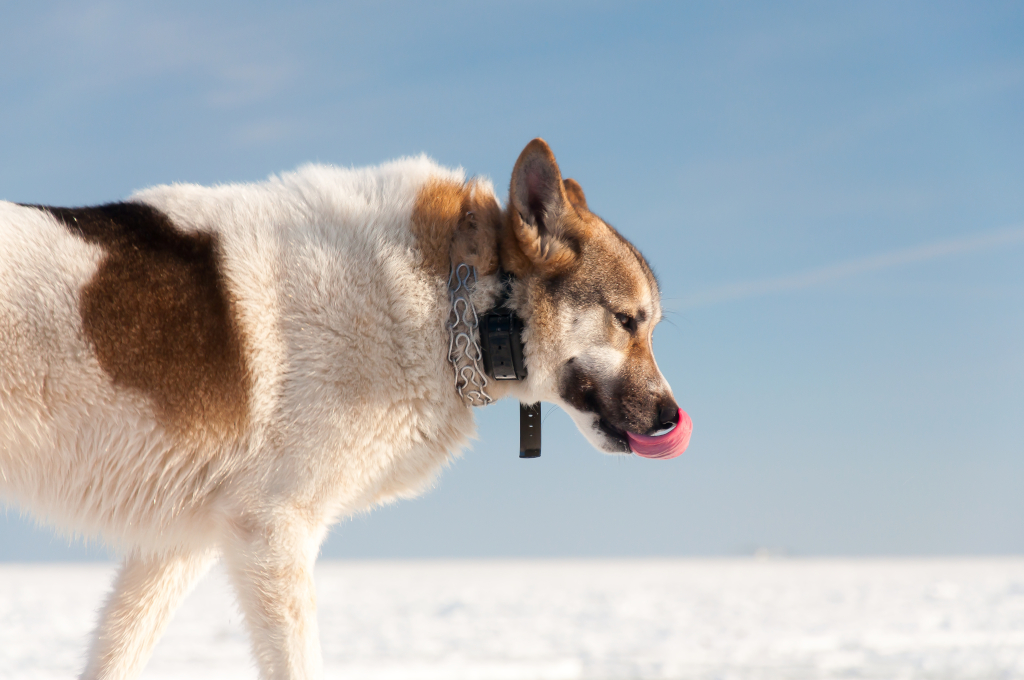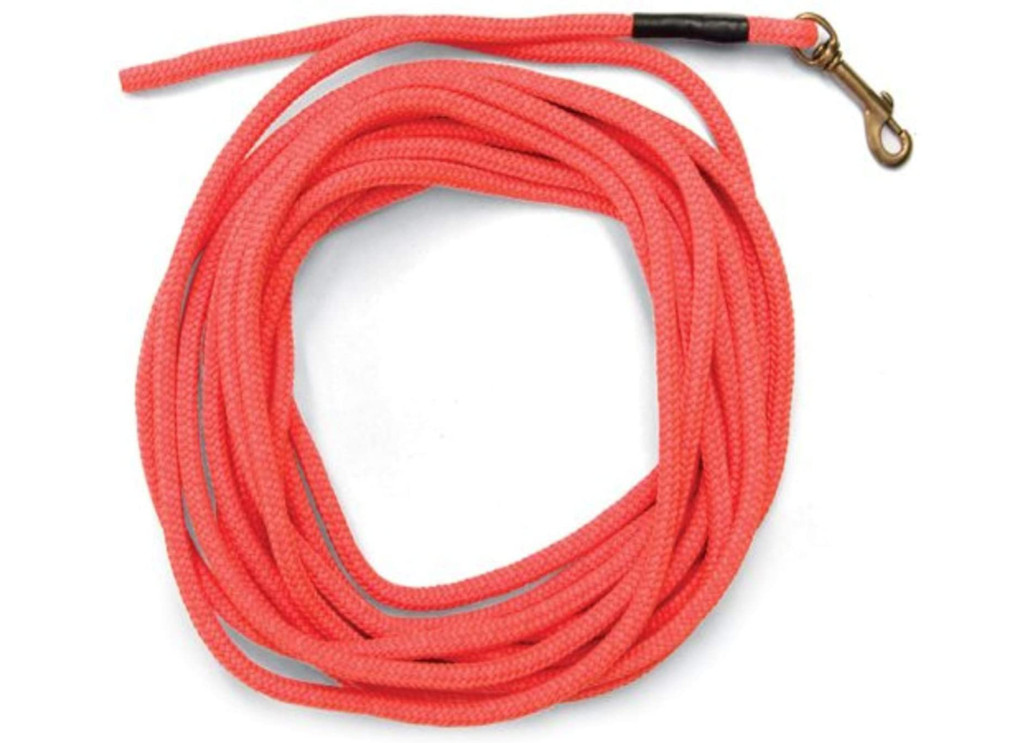Have you been working on off-leash recall training with your dog lately but aren’t seeing the progress you expected?
Your canine is very obedient on-leash and can reliably come when called in the backyard or inside your home. However, when you step outside, walk into a new environment, or while hiking or running outdoors, the recall commands you tried to master all this time seem to go out the window, especially when you let your pup off-leash. It just seems your dog has forgotten the skill you worked so hard to teach them, and all your effort has gone to waste?
You’re not alone.
Getting a dog to come reliably on command in the great outdoors is one of many dog owners’ biggest challenges.
And the fact is, distractions are everywhere. You can try to control all the variables indoors, but as soon as you walk outside into the real world with your furry friend, who knows what they will encounter. Whether it be other dogs, people, or animals, the distractions may be too much for your pooch to ignore you.
So, how can you reliably get your four-legged friend to come in a distracting environment, even when off-leash?
That’s exactly what this article will cover, teaching any dog a reliable off-leash recall in any environment with an e-collar.
But before we get into the main topic, “how to teach your dog a reliable off-leash recall with a remote collar,” we’ll first talk a little bit more about “why your canine ignores you when called,” “why use an e-collar for dog recall training,” and “how you should not use an e-collar.”
Why Does Your Dog Refuse to Come When Called?

Assuming your dog already understands what “come” or “here” means, they are simply unwilling to respond to your recall command. In this case, there are two main reasons why they ignore you.
First, it’s distractions. Your dog is simply too preoccupied with something else that’s going on around them and doesn’t want to leave whatever it is they are engaged in. There’s just too much going on for them to focus on you.
Another reason your dog refuses to come when called is because of the lack of reinforcement of your recall.
What I mean by that is, say, your pup responds to your command 100% of the time when on lead. However, when off the leash, it’s hit-or-miss. Sometimes your dog will come back, but other times they just won’t budge off that exciting spot because they’re too focused on whatever is holding their attention or smells better than the treats you have in your hand at the time.
If you don’t have a way to reinforce the recall, you’re essentially slowly but surely training them that it’s perfectly fine to ignore you when off-lead.
Why Use an E-Collar for Dog Recall Training?
This is where an e-collar comes in handy. An e-collar, or a remote collar, is a training collar that emits mild static stimulations to get a dog’s attention and allow you to communicate with your pup.
Now, some people may think: “This is crazy! I’m not going to shock my dog!” In fact, some are hesitant to use these devices because of this very reason. However, the stimulation from an e-collar is not harmful in any way if used correctly. It simply is enough to get your dog’s attention so you can redirect them back to you.
With e-collars, you’ll be able to reinforce your recall command like never before, which allows you to communicate with your pup and ask them to come to you even if they’re on the other side of a busy street or from 1-2 miles away. Therefore, you see why almost every gundog uses an e-collar, as these tools give hunters the range they need.
You May Also Like: Are Remote Training Collars Cruel?
How You Should Not Use a Remote Training Collar

While e-collars are a very powerful training tool that can provide clear communication with dogs, they can also be misused very easily. And if you don’t know how to operate or use an e-collar properly, you could do more harm than good.
Some of the most common mistakes people make are:
- Didn’t properly introduce their dogs to a remote training collar.
- Turn up the stimulations to a level that’s too high to punish their canines in the hope that their pups will listen.
- Attempt to teach dogs new verbal cues or tricks with an e-collar.
Before using an e-collar, your fido needs to know the basic commands such as “sit,” “stay,” “come,” “heel,” etc. Why? Because these tools won’t teach your furkid anything new, but instead, they are a communication tool used to reinforce commands your pup already knows. So don’t attempt to teach your dog anything new with a remote collar.
Also, if your dog isn’t responding to your recall, don’t use an e-collar to punish them. Resorting to a shock collar to punish your pooch or use it as a way to vent out your frustration is not the answer and could lead to further behavioral issues. Instead, take a step back to figure out why they refuse to come when called, then adjust your training method accordingly.
How to Teach Your Dog a Reliable Off-Leash Recall With a Remote Collar
Now that we’ve covered some of the basics, let’s get into how you can teach your dog a reliable off-leash recall with an e-collar.
Step #1: Start Practicing with a Long Line

Before you even think about using an e-collar, start practicing your recall command with a long line, also known as a check cord. They typically run 20 to 30 feet long, which gives your dog plenty of room to roam around yet still ensure you have complete control over them to keep them safe and prevent your pup from running away while you’re still working on getting them to come when called.
Using a long lead also gives you the ability to give a quick tug on the line to get your dog’s attention to redirect them back to you if they don’t respond. And this is crucial because you are essentially teaching your canine your recall is non-negotiable and that they can’t ignore the “come” command no matter what.
Also, one thing to note is when teaching your dog recall, it’s vital to let them move around freely and allow them to explore, sniff, or do whatever they want to do before giving your “come” command. Because if you don’t, and if you keep calling your four-legged friend to come back as soon as they leave your side, what they will learn is once they move away from you, they’ll get called back anyway and eventually becomes what people call “velcro dogs” who won’t leave the handler.
Step #2: Condition Your Dog to the E-Collar
Once your dog can respond consistently to your recall cue, it’s time to start conditioning them to the e-collar.
Put the remote collar on your dog and make sure you still have the long line on them so that you’re able to guide them when needed. The same method applies here. Let your pup roams around and explore before issuing your “come” cue.
When they become distracted and doing their thing, give your “come” verbal cue, turn on the continuous stimulation on the e-collar, and as soon as they walk toward you, release the button, praise them, and reward them with high-value treats.
If they don’t respond, guide them with the check cord, and remember to shut off the collar only when they respond and walk toward you. The idea here is to associate the stimulation with coming back to you.
Also, make sure to start working on this in a more controlled environment, like in your backyard. This will help limit distractions and make it easier for your pup to focus on you.
Additionally, you would want to start off at the lowest stimulation level possible and only increase the intensity if needed. And make sure to give your pooch lots of positive reinforcement when they come back to you.
Step #3: Start Adding Distractions
Now that your pup knows the basics and has been conditioned to the e-collar, it’s time to start putting everything together and practice in more distracting environments.
This could mean practicing in a more populated area, like a dog park, having your kids run around and wave a toy, or having someone else throw a ball to try distracting your furry friend, etc., while you recall your pup. And if they can’t seem to focus or keep getting distracted, go back to a less distracting environment until they can handle it.
Be patient, and don’t forget to continue rewarding your dog with treats, praise, and lots of love when they do succeed. The goal here is for them to come back to you no matter what’s going on around them.
Step #4: Phase Out the Long Line
As your canine companion becomes more and more reliable and responds to your “come” cue, even if there are distractions present, you can then phase out the long line and practice off-leash recall.
You want to keep practicing recalling your pup in as many different settings and environments as possible until you’re 100% confident they will come when called. For some dogs, it might take a little longer than others, but with patience and consistency, you’ll be able to achieve it.
So, there you have it! These are the steps on how to train your dog off-leash recall with an e-collar. While this may seem like a lot of work, trust me, it’s worth it in the end when you have a dog that comes back to you every single time, no matter where they are!
Final Thoughts
Recall or come when called is, without a doubt, one of the most crucial skills any dog needs to know and master. Not only can it help build trust and strengthen the bond between you and your pup, but more importantly, being able to call your fido back in any situation can help keep them and everyone else around them safe. It’s a lifesaving skill.
Whether you’re just starting out or have been practicing recalling your pup but are struggling to get them to come reliably even in low-distraction environments, hopefully, the tips and steps outlined in this article will help make things easier for you.
Just make sure to start off in a controlled environment and introduce your pup to e-collars properly before adding distractions and test if your canine can successfully respond to your recall command off-leash. Remember to take things slow and be consistent. While teaching your dog off-leash recall with a remote collar may take a bit of time, it’s definitely doable and well worth the effort.

